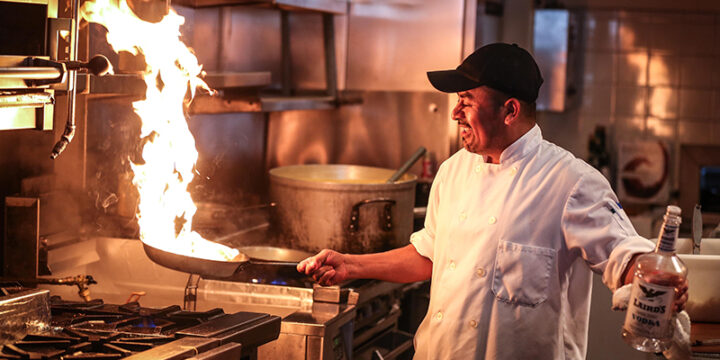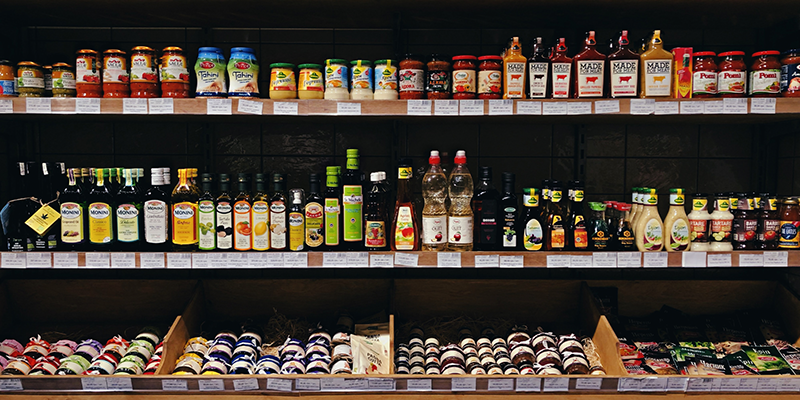Oils are a staple in every household throughout the globe. They are used for cooking, marinating, frying, dressing, and topping food. They are crucial as they provide fats to the body, fat is a demonized term that always causes one to think of a large waist and round belly but the truth is fat is one of the most important macronutrients. It is essential for optimal performance, bone strength, hormone optimization, and proper cognitive function.
Oils are made from the extraction and pressing processes. The oil comes from nuts and seeds, like olives, sunflowers, coconuts, almonds, walnuts, avocados, and even rice bran. Each type of oil has its own unique chemical composition, which means some oils are better suited for dressings, while others will help you achieve that taste in butter chicken. The most important factor is the smoking point.
What is a Smoking Point?
A smoking point of the oil is defined as the point where the oil starts producing smoke and stops shimmering. It is also known as burn point and differs in various oils as shown below.
| Oil | Smoke Point ºF | Smoke Point °C |
| Refined Avocado Oil | 520ºF | 270°C |
| Safflower Oil | 510ºF | 265ºC |
| Rice Bran Oil | 490ºF | 254ºC |
| Refined or Light Olive Oil | 465ºF | 240ºC |
| Soybean Oil | 450ºF | 232ºC |
| Peanut Oil | 450ºF | 232ºC |
| Ghee or Clarified Butter | 450ºF | 232ºC |
| Corn Oil | 450ºF | 232ºC |
| Refined Coconut Oil | 450ºF | 232ºC |
| Safflower Oil | 440ºF | 227ºC |
| Refined Sesame Oil | 410ºF | 210ºC |
| Vegetable Oil | 400-450ºF | 204-232ºC |
| Canola Oil | 400ºF | 204ºC |
| Grapeseed Oil | 390ºF | 199ºC |
| Unrefined or Virgin Avocado Oil | 375ºF | 190ºC |
| Pork Fat or Lard | 370ºF | 188ºC |
| Chicken Fat | 375ºF | 190ºC |
| Duck Fat | 375ºF | 190ºC |
| Vegetable Shortening | 360ºF | 182ºC |
| Unrefined Sesame Oil | 350ºF | 177ºC |
| Extra Virgin or Unrefined Coconut Oil | 350ºF | 177ºC |
| Extra Virgin Olive Oil | 325-375ºF | 163-190ºC |
| Butter | 302ºF | 150ºC |
Importance of Smoking Points

Smoking point is not a huge issue every time and in some cases, it’s inevitable, like stir-frying vegetables with a wok. The smoking point is an indication of the oil breaking down which can possibly cause a release of chemicals that can leave an unwanted bitter taste in your food while diminishing the quality of nutrients and introducing free radicals in it. The key point here is to plan ahead and use the right kind of oil to suit your cooking method.
How To Purchase The Right Cooking Oil?

Your supermarket probably has tons of oils available while the options seem endless, it gets quite difficult to narrow down to choose the suitable one for your use. Here are few tips you can use the next time you grab a bottle or a container:
Flavor vs Neutral Oil:
There are various oils that leave a distinct flavor on the food that completely compliments the cuisine. For example, Sesame oil does a spectacular job in complimenting Asian dishes and bringing out the spices but on the flip side, these flavored oils can leave some unwanted flavor tones in few dishes. Hence, if you’d like to explore the undertones of flavor then we suggest using oils like sesame oil, olive oil, and hemp oil but if you want to cook without any addition of flavor then its best to stick to neutral oils like peanut oil, vegetable oil, and safflower oil, also they have a higher smoking point
Unrefined vs Refined Oil
After oils are extracted, they can either be bottled immediately or refined. Oils bottled in their natural state are labeled as an unrefined, raw, cold-pressed, virgin, or unrefined. These oils tend to retain flavors, as well as beneficial nutrients, minerals, and enzymes. However, unrefined oils tend to have lower smoke points and can turn rancid, so they’re best used for very low heat cooking or raw applications like salad dressings or drizzles. Refined oils on the other hand are thoroughly processed through filtering, bleaching, or heating to remove the volatile compounds that break down in virgin oils. The resulting product is an oil with a neutral taste, long shelf life, and high smoke point.
